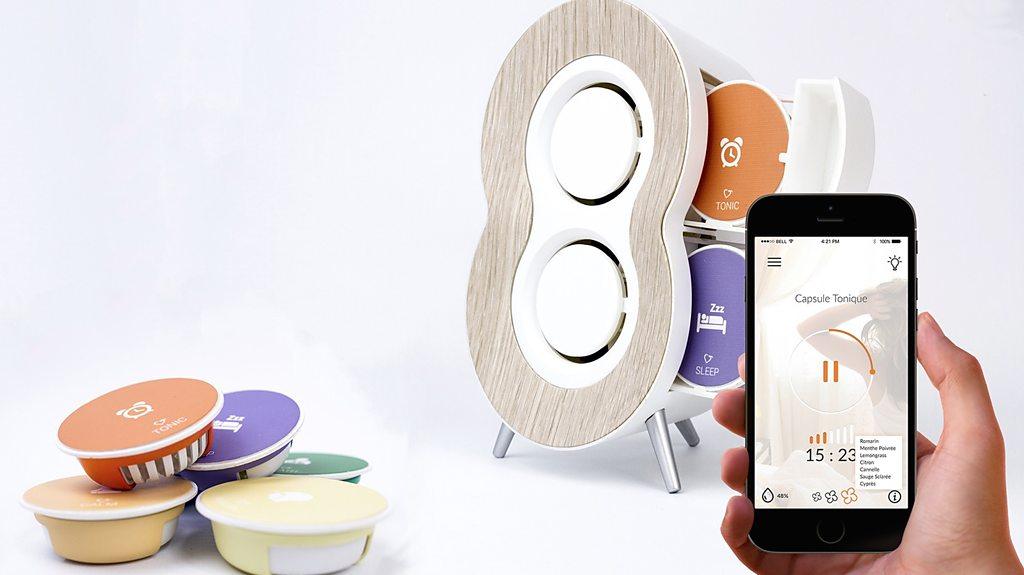CES 2017: Tech preview of Las Vegas's biggest launches
- Published
WATCH: A device that lets children create their own bedtime stories is just one of thousands of new products that will go on show at CES
CES provides a first glimpse at the future.
Pretty much all of the tech giants attend the vast Vegas expo - either to unveil new products or to clinch deals behind the scene.
But in recent years it's been start-ups that have had many of the most eye-arresting and sensational reveals.
There are more at this year's show than ever before, thanks in part to crowdfunding. They now have to convince retailers - hunting through the halls for the next bestsellers - that the promise of their concept videos has been delivered upon.
WATCH: A start-up offering virtual reality thrills without the need for a headset is one of more than 200 French companies at CES this year
Dozens of start-ups are also there thanks to help from governments and other national bodies - France, Israel, Ukraine and the Netherlands all have stands where they'll fly the flag for local talent.
But China may make the biggest splash with more than 1,300 registered exhibitors.
"Every year at CES I meet the people who work on the technology that affects our lives and you can see literally every part of the tech industry represented," innovation evangelist Robert Scoble told the BBC.
Of course, there's a lot of crud too - the challenge is to distinguish the potential hits from the glitch-ridden flops.
Below, we have picked what could be some of the week's highlights:

Voice control and other new interfaces
CES marks the beginning of a land grab by three of the leading virtual assistants: Amazon's Alexa, Microsoft's Cortana and the Google Assistant.
The companies all want their voice-controlled AIs to power third-party products. And Amazon looks to have the head start.
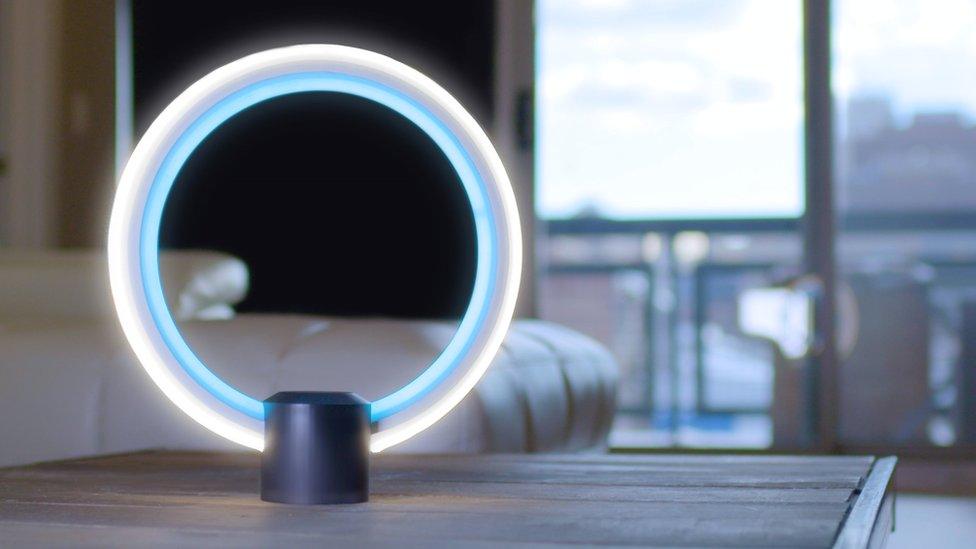
The C by GE table lamp has a central blue ring that responds when Alexa is summoned
The headphones specialist OnVocal will be showing off wireless earphones that link up to Alexa, and GE has also preannounced a table lamp that doubles as a speaker powered by Amazon's voice service. Sonos too aims to add the facility to its wireless speakers, though we believe it isn't quite ready to show off its efforts.
But don't count the other two out.
We know Microsoft is working with Harman Kardon on a "premium audio" speaker, and the firm has teased adding Cortana to other types of products, including toasters. And Google has secured at least one bit of kit at CES - the Aivia speaker - to host its cloud-based intelligence.
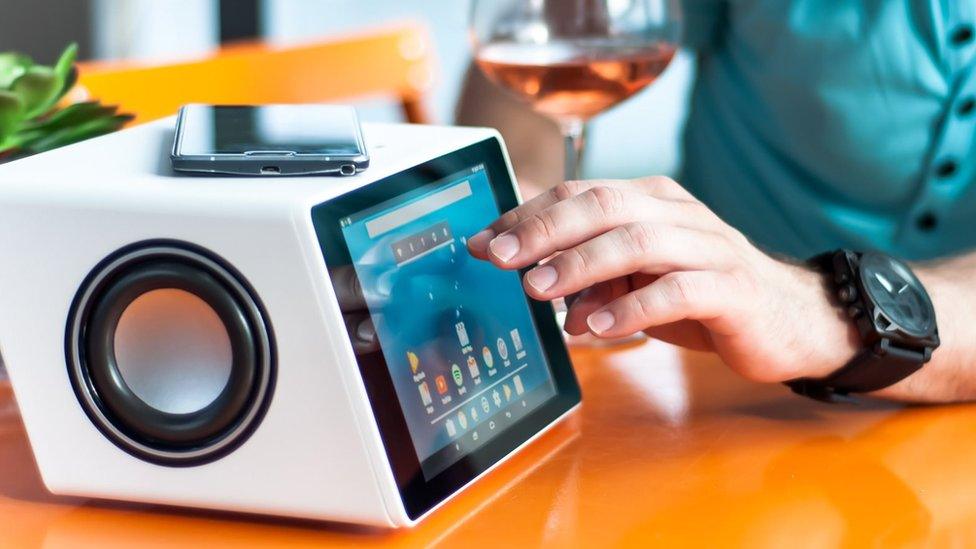
Aivia says its smart speaker will be equipped with Google Assistant
One expert suggested others will also try to gatecrash the party.
It's not all about voice though.
The French start-up Bixi will be making the case for gesture controls. It will be demoing the final design of a gizmo that lets you control smartphones and tablets with a wave of a hand.
WATCH: Bixi's glowing pad lets smartphones and tablets be controlled with a wave of the hand
More groundbreaking perhaps is the Blitab, a tactile tablet described as the iPad for the blind.
The Austrian innovation produces small physical bubbles in an area above its touchscreen which delivers refresh double lines of dynamic Braille.
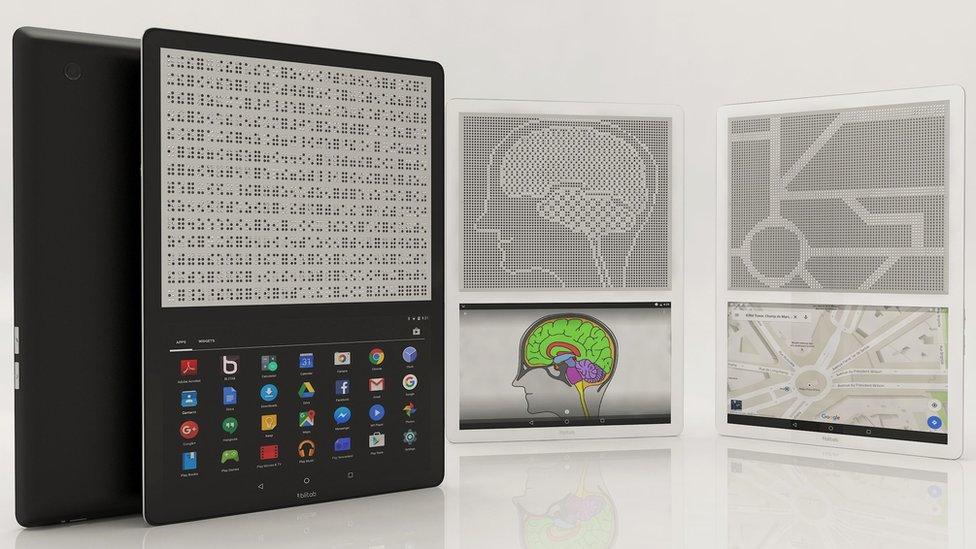
Blitab plans to show off an Android tablet with a dynamic braille display

Year of the robot?
We're still decades away from having the type of androids seen on TV shows such as Westworld or Humans.
But CES is still an opportunity to see how far along more specialised kit has become.
London-based Emotech is one to watch.

The Olly robot learns over time how best to behave with different users
It will unveil Olly - a tabletop bot with its own smart assistant that recognises different household members and adapts it personality to suit each one.
The project was developed with help from academics at University College London, Imperial College and Edinburgh University, and has already secured $10m (£8.2m) of investment from China.
There will also be a range of modular robots.
Several companies are backing the concept, which allows users to switch about parts to change skills and manoeuvrability.
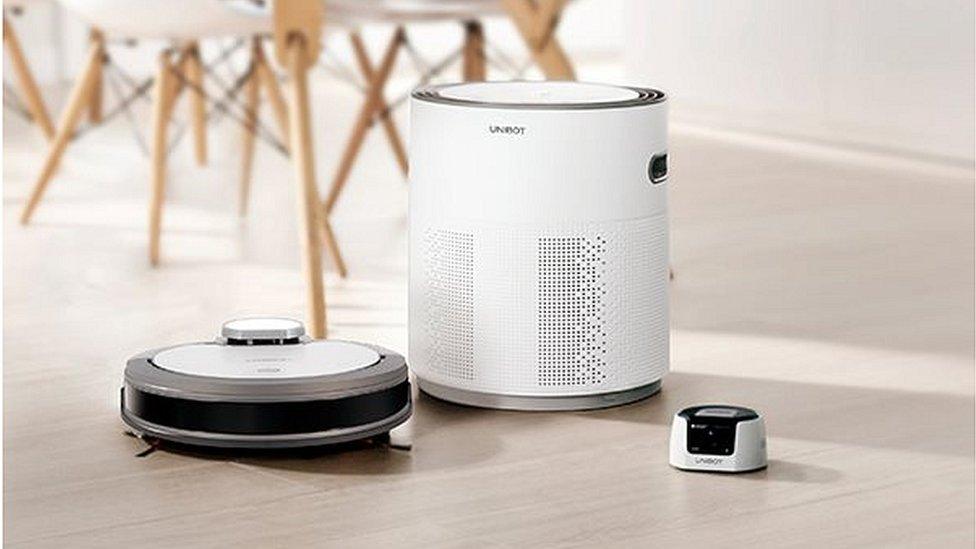
The Unibot offers changes function depending on which modules are connected to its base
Examples will include Modi, a Lego-style kit that lets owners build a bot out of small cubes - each offering different functions such as motors, lights and infra-red detectors.
Another is Unibot, a robotic vacuum cleaner that trebles up as a mobile home security camera and an air purifier/humidifier.
Meanwhile, OAPs can look forward to Cutii, a robot that resembles an iPad on wheels, which will supposedly become their "companion".
And there will also be bots that zoom round tennis courts picking up balls, remove droppings from cat litter, and even move physical chess pieces around a board.
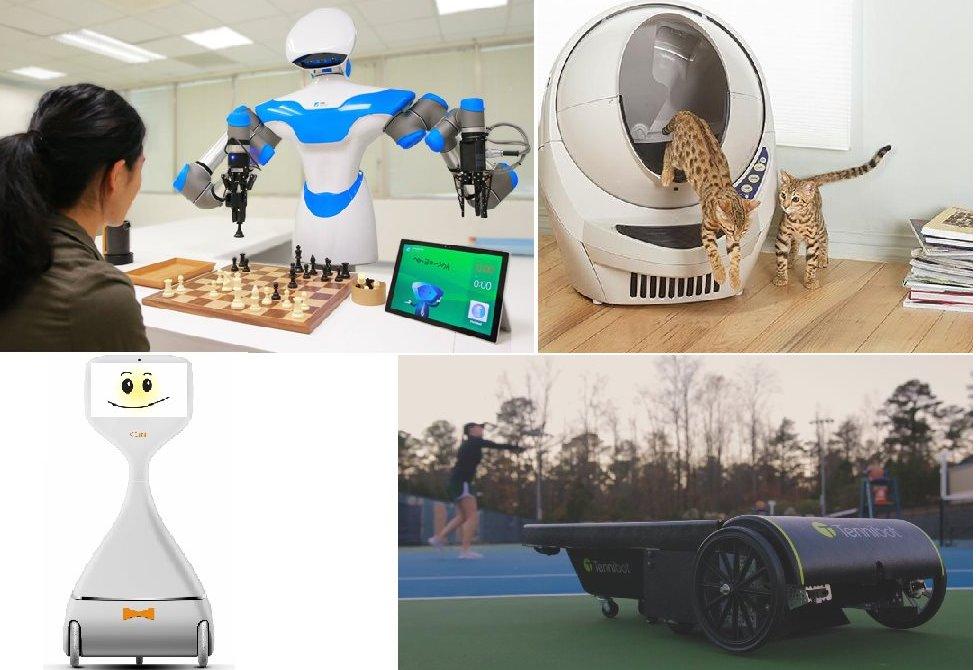
There will be a range of robots specialising in niche tasks at the show
Keep an eye out for Laundroid, too. The Japanese clothes-folding machine raised $60m from Panasonic and others for its giant clothes-folding droid following an appearance at last year's CES.
Some have described the idea as ridiculous.
But it will be interesting to see if it works well enough to go on sale later this year, as planned.

Potential buyers of the Laundroid will have to make sure they have room to install it

Health and wearables
Pregnancy seems to be one of health tech's preoccupations this year.
There is both Ava, a sensor-equipped wristband that apparently alerts women to when they are most fertile, and Trakfertility, a DIY sperm count test that tells an associated app what steps the owner should take to boost their numbers.

Ava claims its wearable will help women "understand" their bodies better to help them get pregnant
And just in case you are tempted to pair off with the wrong partner, Milo Sensors is in town with what it describes as the world's first blood alcohol wearable.
It's easy to joke, but health tech is booming and analysts are competing to predict how many billions of pounds it will be worth in a decade's time.
The ultimate goal is to create something resembling Star Trek's Tricoder - an all-in-one device that diagnoses any ailment.
An Israeli start-up will be showing off a gadget that promises to get us at least partly there.
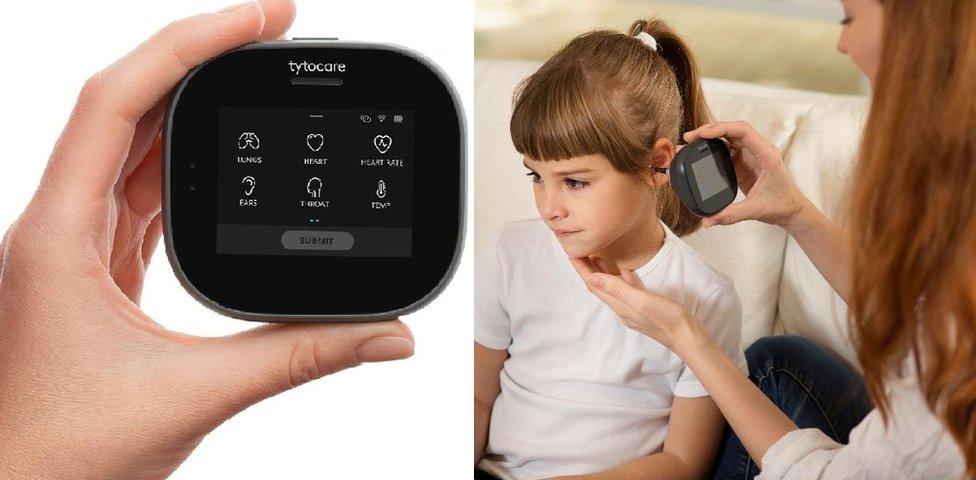
TytoCare says it wants to put "health in the hands of consumers" with its diagnostic devices
The TytoHome is designed to let families take heart, lungs, throat, abdomen and other organs' readings and send them to their clinicians. Its slogan is a "check-up without the check-in", but medics may need convincing.
There will doubtless be new twists on the fitness tracker too. It would be unwise to suggest the market for such devices has peaked - Fitbit's app topped Apple's App Store this Christmas, indicating people are still buying them in droves.
But a more intriguing development is wearables with built-in airbags.
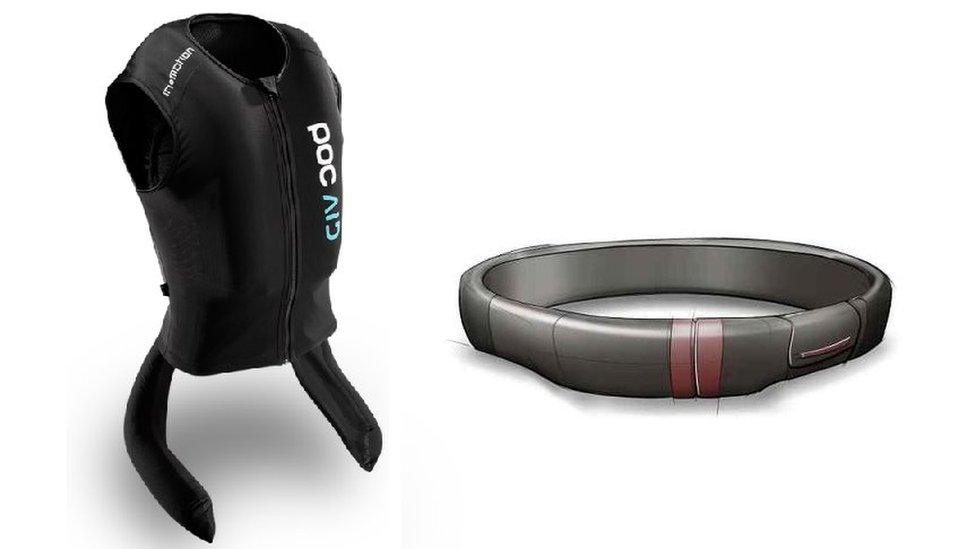
At least two companies at CES are trying to adapt the car's airbag for the human body
ActiveProtective is promising to show off a prototype smart belt for the elderly that triggers a cushioning action over their hips if it detects a fall.
And Inemotion has developed ski racing clothes with a similar function to prevent injuries on the piste.
France's Wair has a different spin on discreet wearable tech with a internet-connected scarf that doubles as an air filter.
WATCH: Wair's smart scarf promises cleaner air with a focus on fashion
But the question remains whether wearable tech has a profitable future beyond health.
There will be more app-laden smartwatches - including the possibility of the first Android Wear 2.0 devices - at the show, but the sector has not been the hit many had predicted.
We're also promised the world's first vibrating tight cut jeans that offer their wearers directions without having to look at a screen.

Spinali Design's jeans connect to a smartphone to buzz different sides of the wearer's body to direct them to turn left or right

Televisions
If you had asked the experts a decade ago, they would probably have predicted OLED (organic light-emitting diode) TVs would be the norm by now. But the tech has faced several setbacks.
It's stubbornly refused to become as cheap to manufacture as hoped, it doesn't go as bright as LED equivalents and some complain that it "crushes the blacks" making it hard to distinguish detail in the shadows.
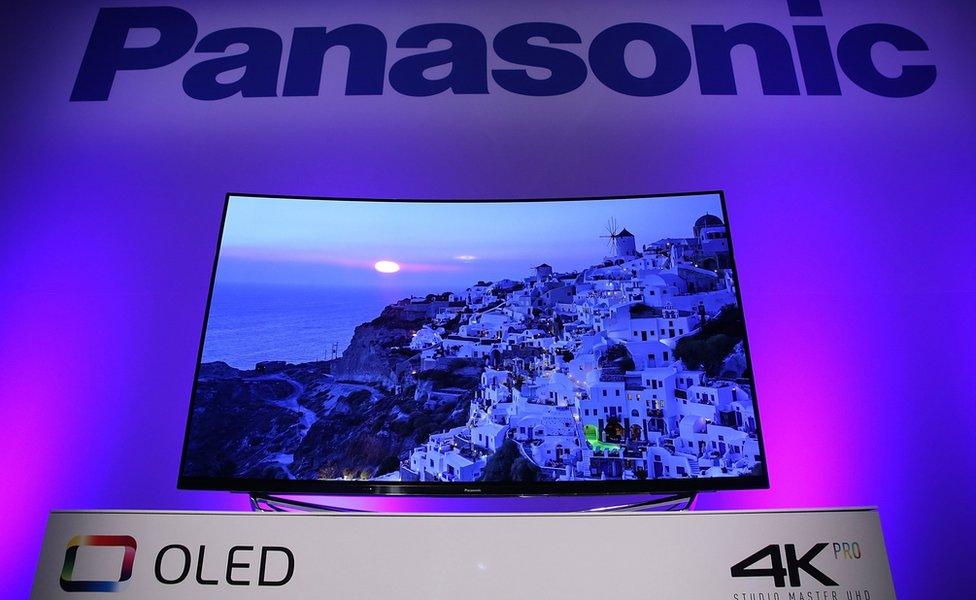
Panasonic was once famed for its plasma TVs, now its focus is OLED
Even so, OLED retains a wow factor thanks to its ability to control the light of each individual pixel, helping its images to have more "pop", and its screens to be ever thinner.
Panasonic has hinted it will show off an OLED display at CES that will better handle dim scenes, and there is speculation Sony has similar news.
Plus there's reason to believe prices are about to drop.
Until recently, LG manufactured all the OLED panels used by itself and other brands. But now BOE - a Chinese company - has a rival component. The question is who will break ranks to adopt it.

QLED, UHD, HDR, HLG - OMG!!! - be prepared to get your head round a lot of acronyms if you want to understand the latest TV tech
Expect Samsung to make a loud noise about QLED, a new spin on its "quantum dot" technology that allows its screens to be brighter than ever before.
That's important because of HDR - another acronym you're going to have to get used to. It refers to high dynamic range, which allows images to appear more vibrant and detailed - especially in scenes containing both glints of light and shadows.

Dolby claims its version of HDR offers the best picture quality, but most TV-makers have opted to support the open source HDR10 standard instead
The problem is that there are three rival HDR standards - HDR10, Dolby Vision and the BBC's forthcoming HLG - meaning the potential for another format war.
But it is possible to support all three, so it will be revealing to see if any of manufactures make a commitment to do so with their new screens.

Smart home and other "internet-of-things"
It's now relatively cheap and power-efficient to add sensors and wireless data links to products. That's led to an explosion of ideas - some more sensible than others.
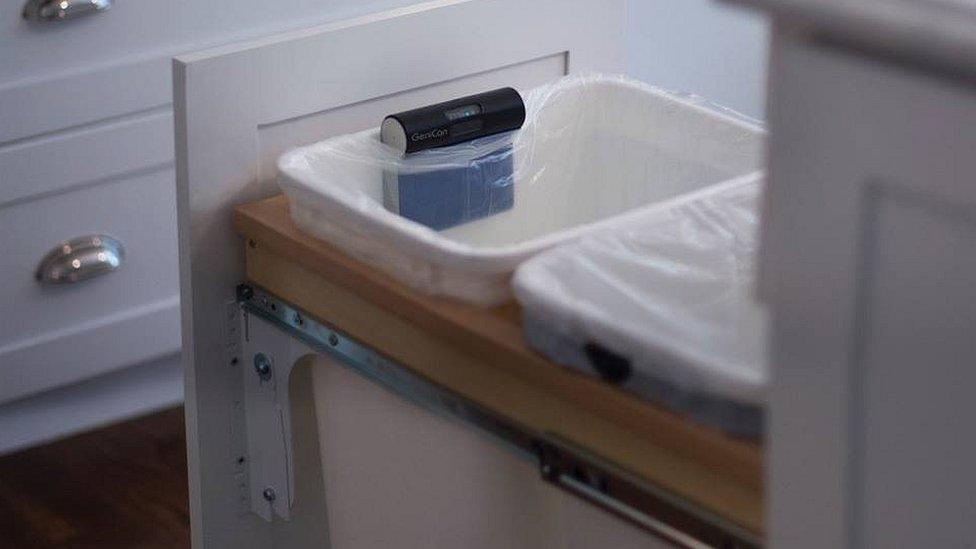
It's debateable how many of us really need Genican, for example, a device that scans rubbish's barcodes as it is thrown away in order to build up a shopping list of replacement items.
Likewise, it's not clear whether an aromatherapy diffuser needs to be smartphone-controlled, even if its scents really boost memory and clean lungs, as claimed.
WATCH: A new gadget at CES allows users to change the smell of a room via a tap of an app.
Where things get more interesting is when tech genuinely makes lives simpler without requiring too much effort.
One way firms are trying to do this is by focusing on the refrigerator.
LG has a model that activates a sterilisation process when it senses temperature and/or humidity issues in order to extend food's shelf life.
And for those who would prefer to retrofit their existing equipment, UK start-up Smarter Applications has Fridgecam: a device that keeps track of what its owners have in stock and when it expires, sending alerts to buy new items when necessary.
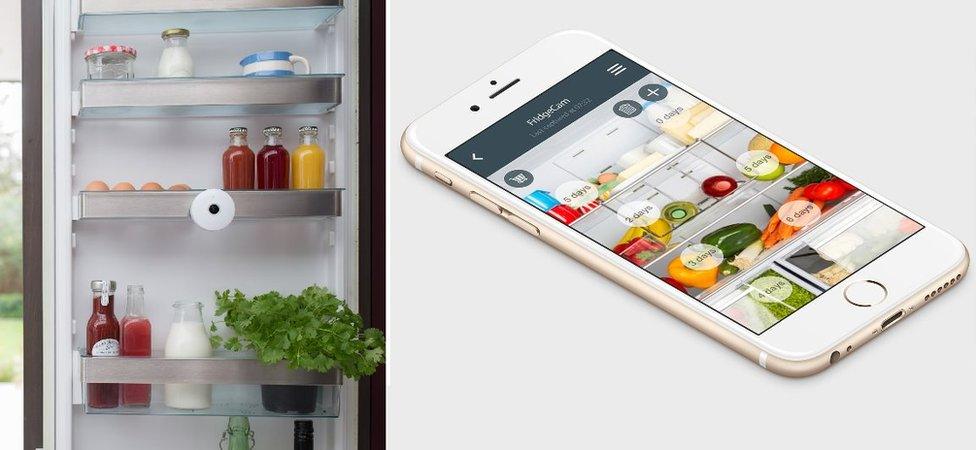
The Fridgecam shows owners what's in their fridge and can suggest recipes based on the contents
But one expert says if the sector is to achieve its potential, consumers need to be reassured that the risks do not outweigh the benefits.
"In the last 18 months the conversation about security and privacy has moved from the tech pages to the front pages of newspapers," said John Curran from the consultancy Accenture.
"To make these devices easy to connect and easy to use, some companies have hardcoded passwords or put no security measures in place, and that made them an easy target.
"At CES we're looking for businesses to be more transparent about what data is being collected, how it's being used and with whom it's being shared.
"And they need to make it easier for consumers to adjust their security settings."

Virtual and augmented reality
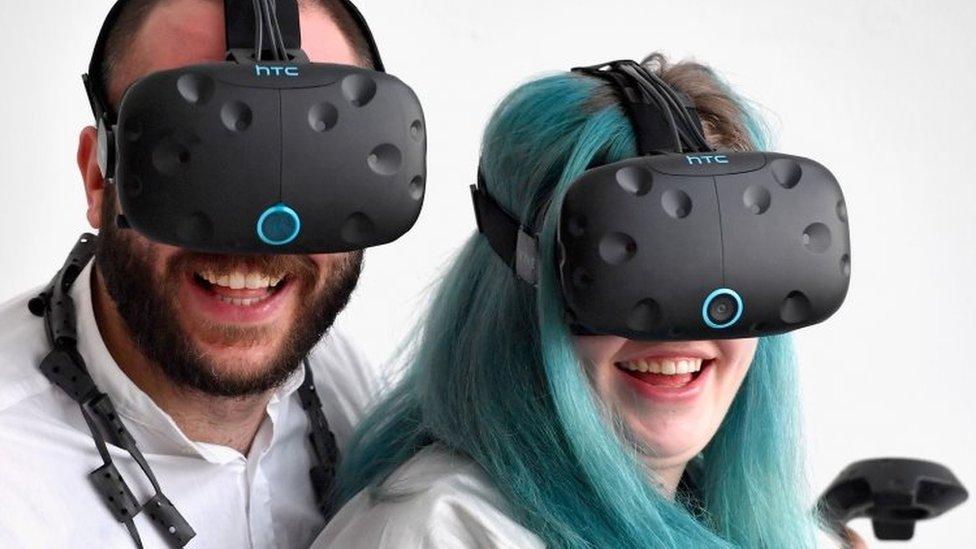
HTC beat Sony and Oculus to bring a virtual reality headset to market in April
There are rumours that HTC will unveil a second-generation Vive VR headset at CES - possibly introducing wireless capabilities - but the system is only nine months old, so that seems a tad optimistic.
The two other big virtual reality firms - Sony and Facebook's Oculus division - launched their kit even more recently.
Even so, there should still be lots of developments.
Huawei has just hired Steve LaValle, one of the brains behind Oculus, and the Chinese firm is set to reveal more about its VR plans at the show.
It's a safe bet that several third-party headsets previously teased by Microsoft will also be on display.
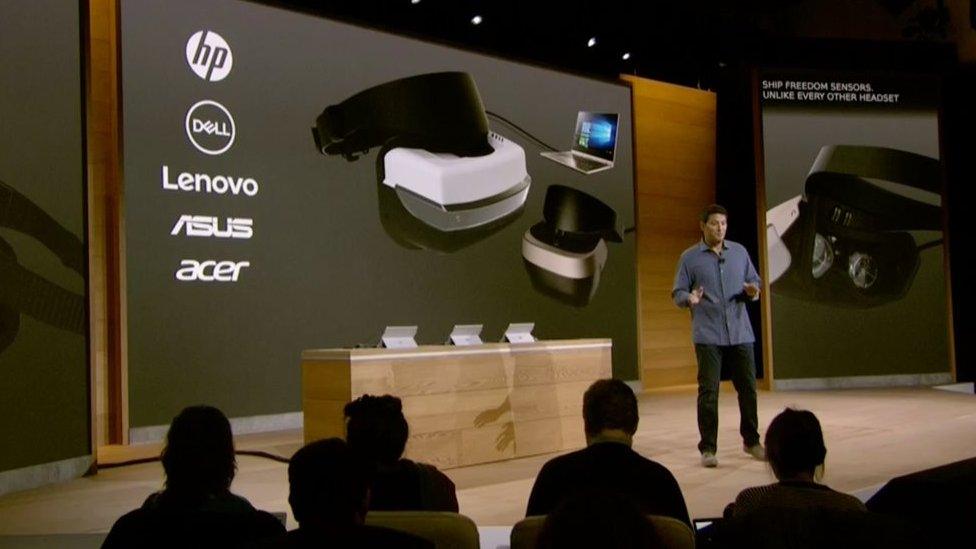
In October, Microsoft disclosed that several firms were working on Windows 10 compatible VR headsets
And we will also see the introduction of Fove, a crowdfunded VR headset with eye-tracking abilities, allowing gamers to control action with shifts in their gaze.
Fove won't be the only one trying to offer new ways for users to interact with virtual experiences.

Fove raised $480,000 for its eye-tracking headset via Kickstarter and plans to start delivering them during the week of CES
A foot controller that lets you direct where your character walks, a sensor-laden T-shirt that tracks your torso's movements, and various haptic devices that try to let consumers feel virtual objects are just some of the products with CES stands.
With augmented reality - where graphics and real-world views are mixed together - things are still at an early stage.
But Asus and others may reveal handsets that include Google's Project Tango depth-sensing technology, adding basic AR capabilities.
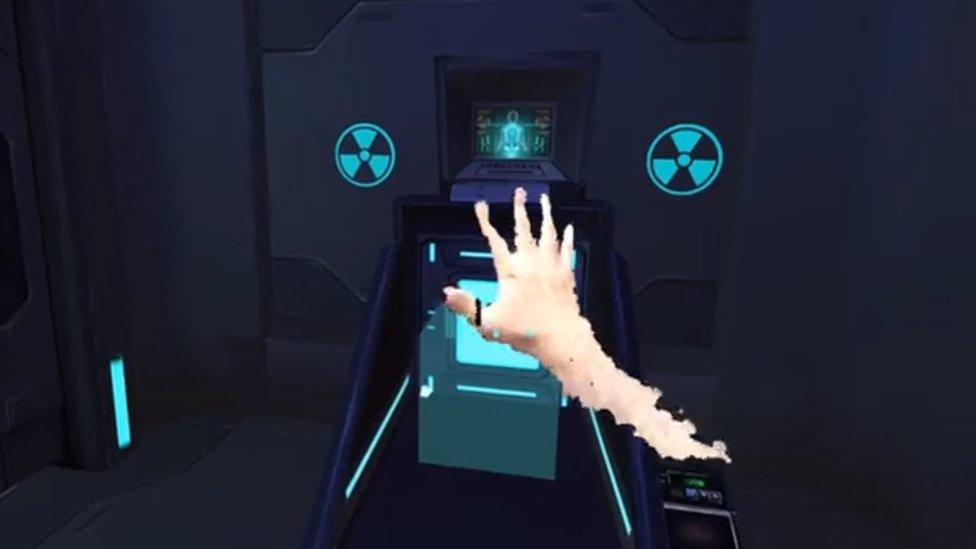
Most augmented headsets overlay graphics over the real world, but Intel is taking the reverse approach
Intel will have more to say about Project Alloy - a headset that lets you see your hands and other real-world objects within VR worlds.
And a start-up called Occipital will demo a contraption that uses an iPhone to create something akin to Microsoft's HoloLens mixed-reality headset.
While hardware may dominate the headlines, it could be content that determines which products are winners.

Occipital's Bridge headset scans the surrounding area to create a digital copy in which the user can interact with virtual characters
"In the US the National Basketball Association recently announced that it will broadcast games in virtual reality," noted Mr Curran.
"And as other big media and content companies get involved, they will attract more types of consumers to VR, rather than just the tech-enthused.
"So, I'll be looking to see which platforms the media providers target as they pursue opportunities in this space."

Transportation
There's going to be a lot of talk and demos of self-driving cars by the big automakers on and off the Las Vegas strip.
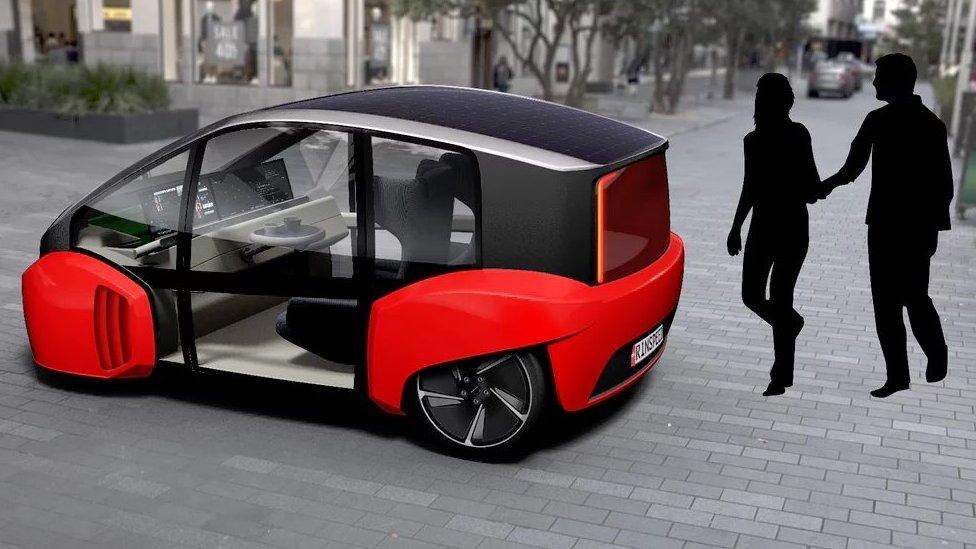
Rinspeed will be exhibiting a concept vehicle designed for a self-driving future
Menawhile, rival chipmakers - including Intel, Nvidia and Qualcomm - will be excitedly pitching their processors and 5G chips as the potential heart of the autonomous vehicle revolution.
But you'll have to wait for a future CES to find anything road-ready that allows the "driver" to really ignore the steering wheel.
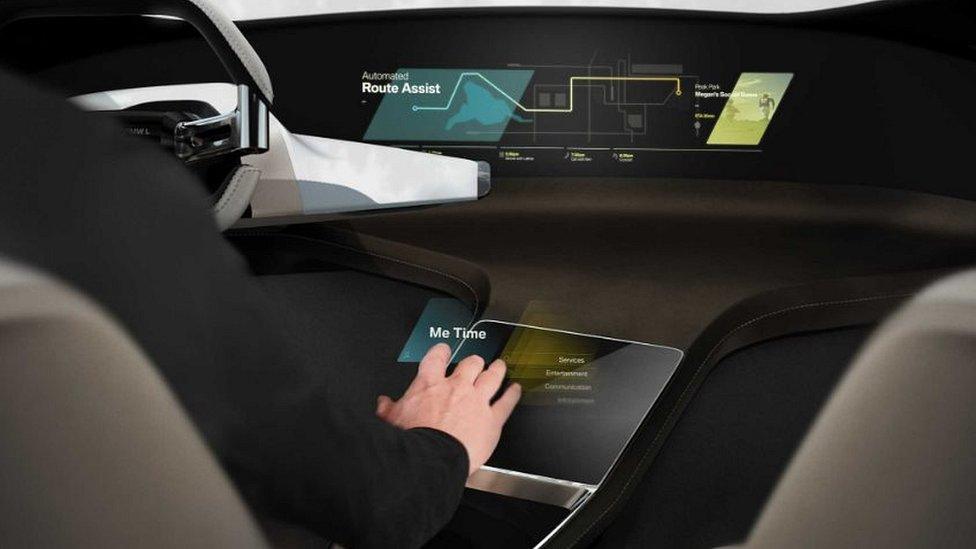
BMW says the functions of its concept car can be controlled without any physical contact
This time round, look instead for new ways to interact with your vehicle.
BMW will unveil its HoloActiv Touch system, in which motorists use finger gestures to interact with graphics that project out of dashboard screens.
And Continental will demo facial recognition tech that recognises who is driving and adjusts mirror and seat positions accordingly.
Faraday Future is also back for a second year to convince sceptics that it can launch an electric car before its funds dry up.

Faraday Future has posted teaser videos in which it claims its car can accelerate from standstill more quickly than the Tesla Model X
There will also be all kinds of alternative transport ideas including an intelligent scooter that shuts off its power if it detects an accident, a motorised rideable suitcase and the latest evolutions of the hoverboard.

Odds and ends
And we've still barely scratched the surface. There are zones dedicated to drones, beauty tech and 3D printing.
Plus there's room for oddities, such as a device that claims to be able to record smells.

AEE will be showing off a "flying selfie stick" while Magic Instruments claims people can learn to play its Mi Guitar in minutes
The BBC tech team will do its best to keep you across all the major developments from the first press day on Tuesday until the show floors shut on Sunday.
You can keep up to date at bbc.co.uk/ces2017 and by following our Twitter list of those covering CES, external.
- Published2 January 2017
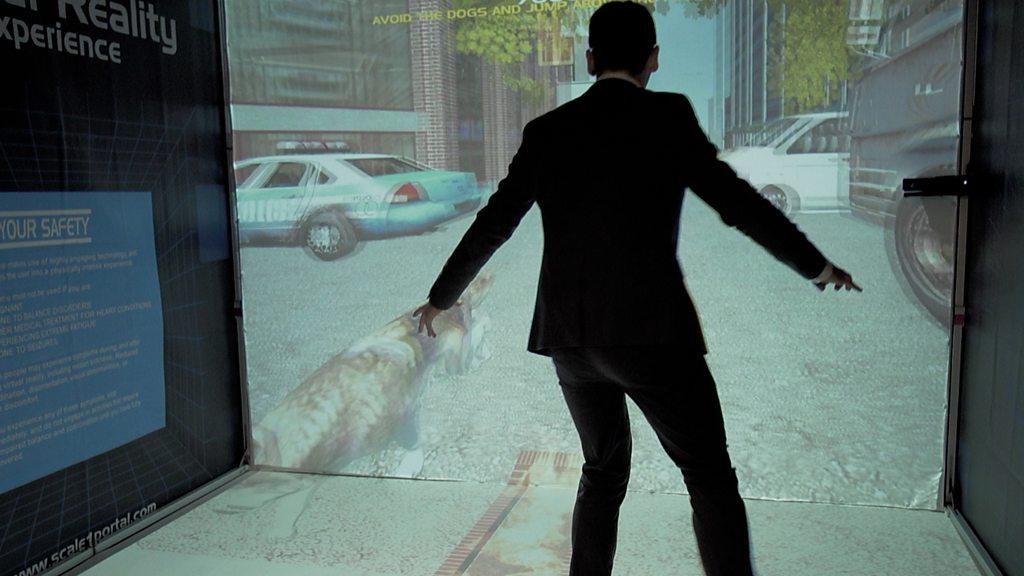
- Published2 January 2017
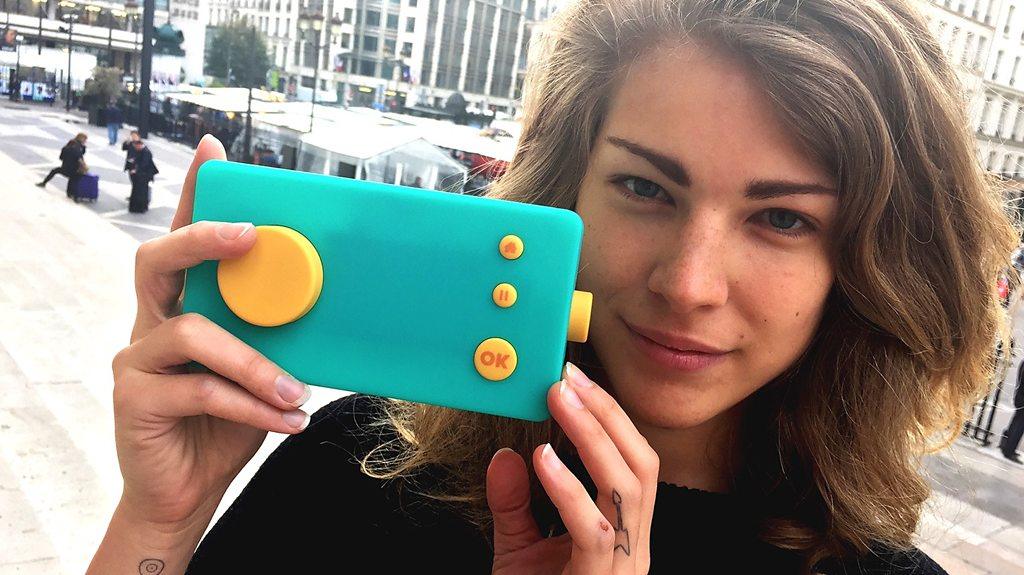
- Published2 January 2017
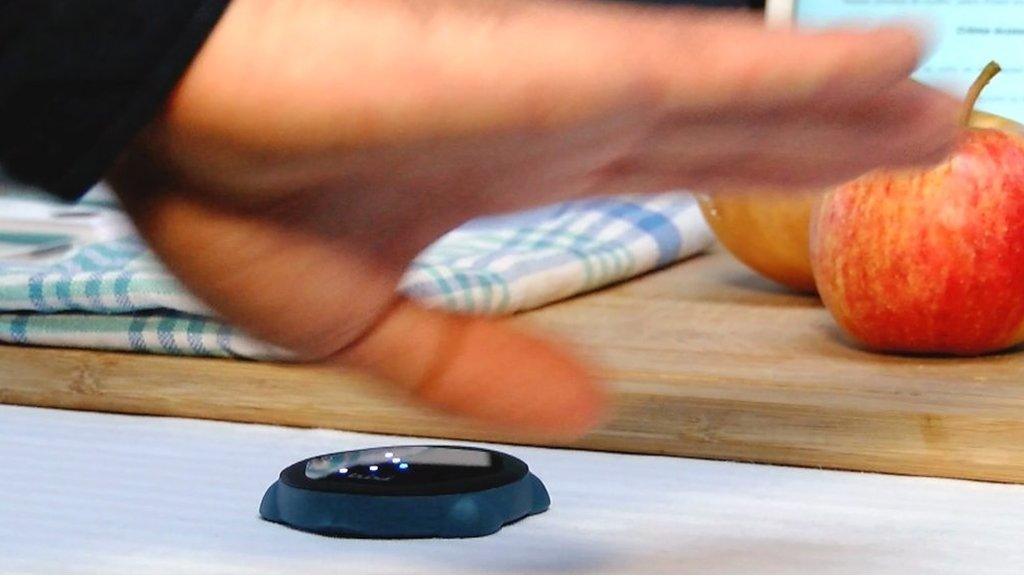
- Published2 January 2017
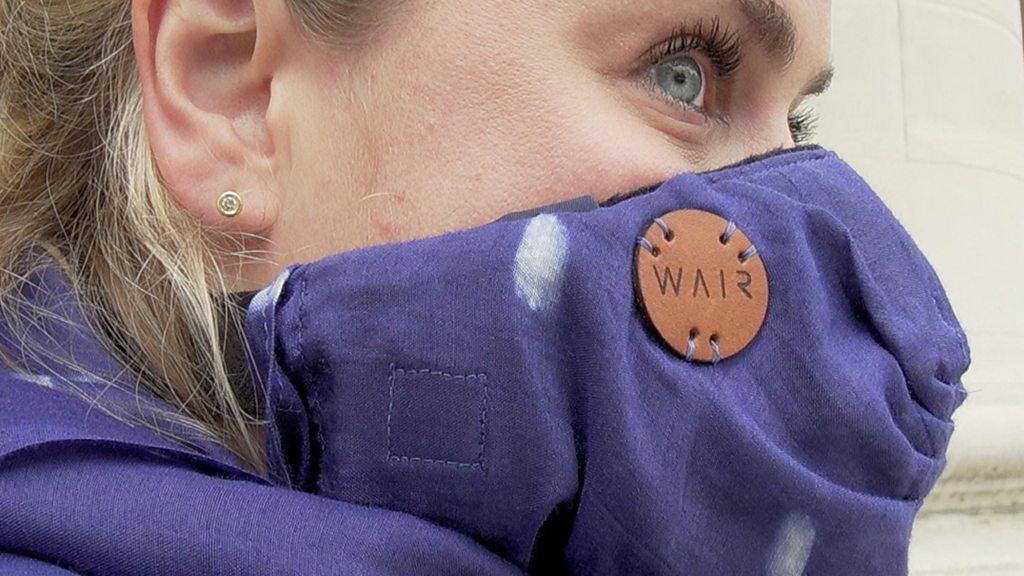
- Published2 January 2017
